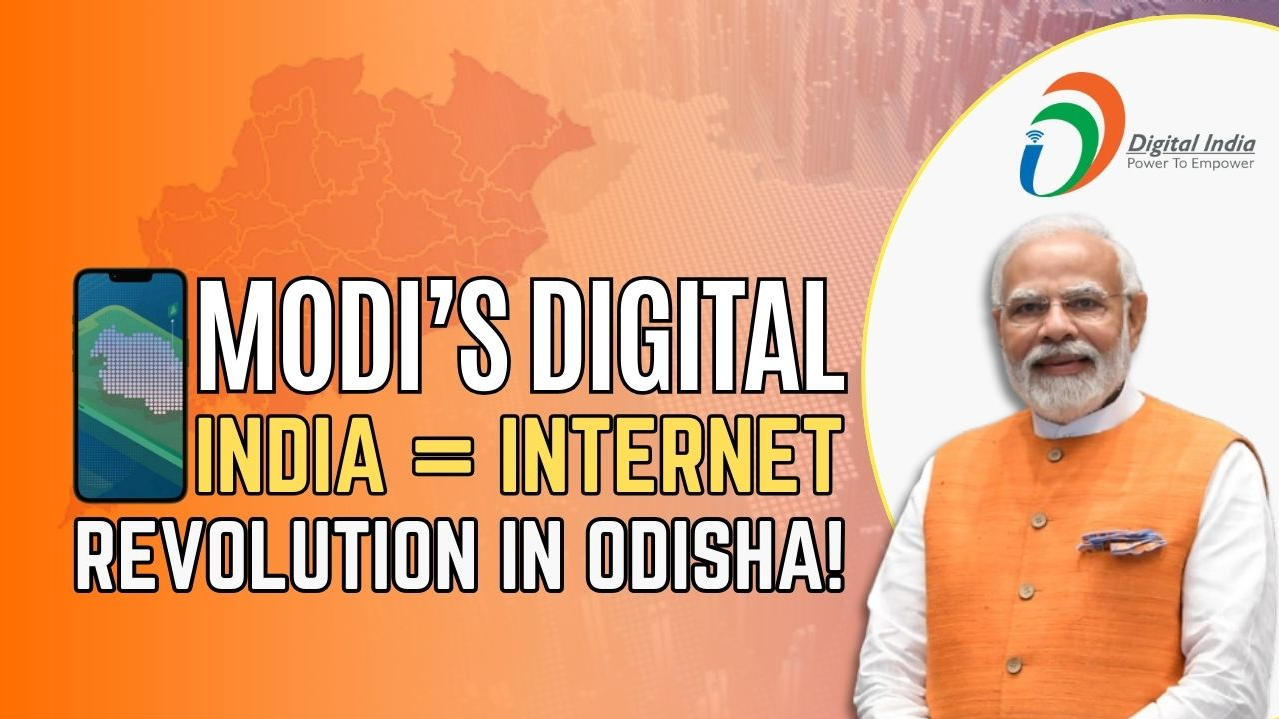

Bhubaneswar: Prime Minister Narendra Modi’s digital India programme launched in year 2015 has brought a revolution in the internet penetration in Odisha.
This campaign was launched by PM Modi on the Independence Day in 2015. Under this, the government services were made available digitally to citizens.
The campaign has also established the necessary infrastructure along with the cheap availability of 4G services across the country.
All this has made the internet penetration in the State take wings. The internet subscribers in the State have posted a stupendous spike of near 200% in the last 8-years.
The Odisha Economic Survey 2024-25 measures this internet revolution in the State as it has released the following big numbers.
RURAL ODISHA LEADING MOBILE REVOLUTION
Undoubtedly, the telecom footprint has increased considerably in Odisha. However, the Eco-Survey has found new subscribers slowing down a bit in the last decade.
As per the Economic Survey 2024-25, the mobile subscribers in the State have increased by only 71 lakh in the last 12 years.
The mobile subscribers were at 271 lakhs in March 2012. The count went up to touch 342 lakhs in March 2024.
But the mega fact to fore have been that the percentage of rural subscribers in the State is 66.2 percent, which is second highest in the country after Bihar.
More so, it is the rural tele-density that has increased from 35.2 percent in March 2012 to 62.2 per cent in March 2024, growing at a CAGR of 4.9 percent.
The above data released by Economic Survey shows the near doubling of rural teledensity in the State.
This is the 3rd highest across all major States in India after Kerala and Andhra Pradesh.
As per the Survey, the overall tele-density in Odisha is 77 per cent as against 85.7 per cent at All-India level.
The Survey sheds lights on the following.
INTERNET REVOLUTION IN ODISHA
However, in the realm of internet world, the State is seen making giant strides, if the Economic Survey numbers are any indication.
As per the Survey, the number of internet subscribers per 100 population in Odisha was 19.5 in year 2015-16.
With the launch of Digital India, the internet subscribers/100 in the State made a high jump to touch 51in 2023-24.
The growth is more than double. The Survey noted that it has increased by 2.6 times between March-end 2016 to March end 2024.
The new BJP govt has said, “As the Sate is still behind the all-India average of 63.5 as of March 2023, there is a need to improve telecommunication infrastructure in the State to drive the digital economy and its associated sectors, including fintech and edtech.”
WHY DIGITAL INDIA TOP PRIORITY FOR ODISHA?
The Economic Survy has counted the following needs of the State for which the telecom infra – mobile and internet penetration – is vital for Odisha.